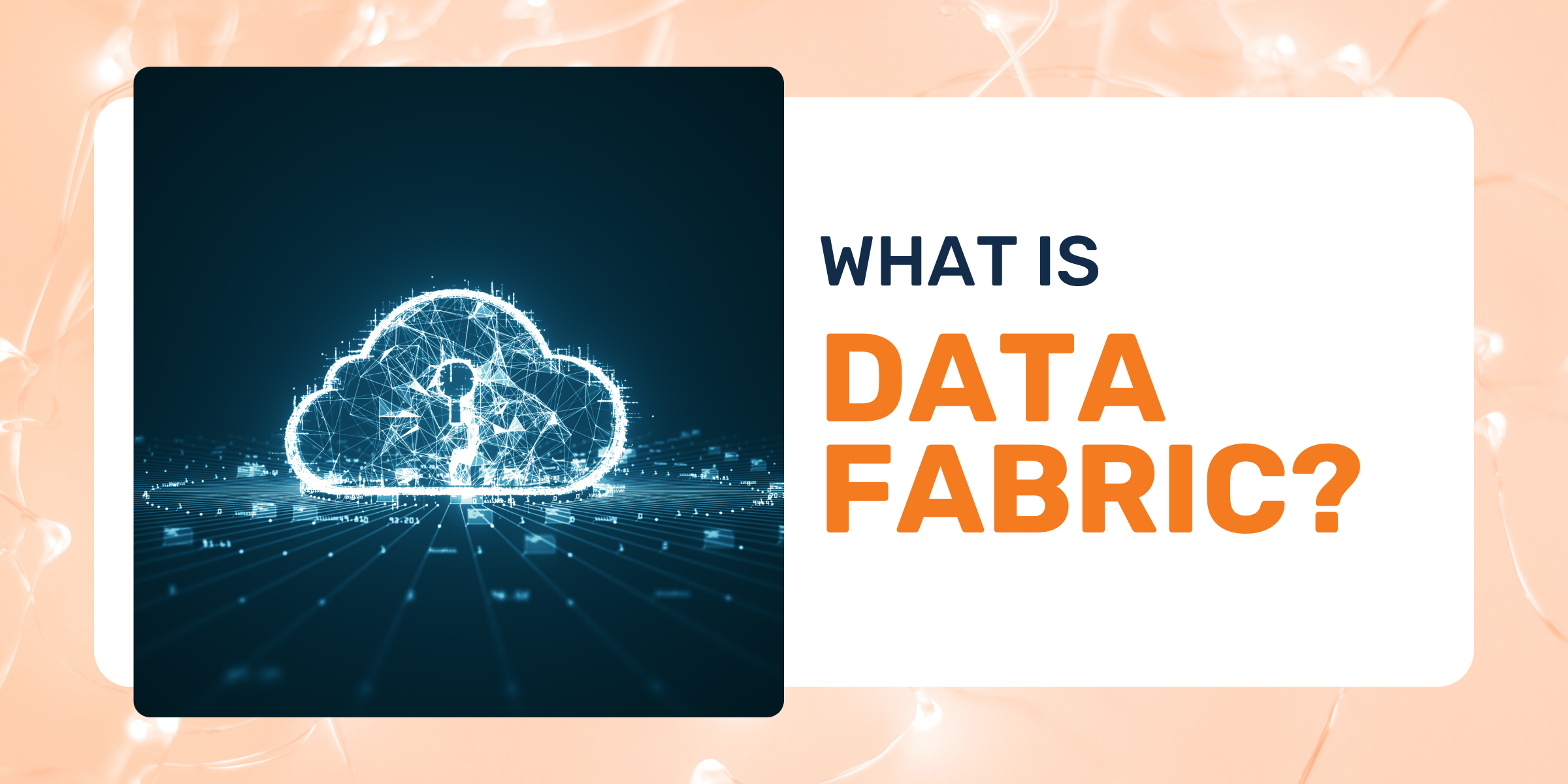
The term "Data Fabric" has emerged as a beacon of efficiency and integration in the data management industry. At its core, data fabric represents a holistic, flexible, and scalable architecture designed to maximize the value of data within an organization. Unlike singular tools, data fabric is a comprehensive framework for seamlessly integrating various tools, systems, and processes, creating a unified data environment. Check out our Ultimate Guide to Data Fabric to learn more about this new and emerging trend in data management.
Core Principles of Data Fabric
Holistic View of Data
Data fabric aims to overcome the traditional challenge of data silos within organizations. By providing a holistic view of data, irrespective of its location or format, it breaks down barriers and fosters a unified data environment. This approach allows for a more comprehensive understanding of data assets, leading to informed decision-making.
How many times have you heard the term “data-driven culture” in some way? Data fabric is a way to make this a reality, instead of simply something we all say. It breaks down barriers and democratizes access to data so you can start analyzing data instead of waiting for it.
Seamless Data Management
Data fabric ensures a smooth data management lifecycle through:
-
Ingestion: Streamlining the data ingestion process, data fabric ensures the efficient flow of information into the system.
-
Access: Enabling easy access to data, the fabric ensures organizations can keep pace with the ever-growing volume of data.
-
Preparation: The fabric extends its capabilities to data preparation, simplifying the process of getting data ready for analysis.
-
Sharing: Facilitating seamless sharing of data, it promotes collaboration and accessibility across various business functions.
-
Analysis: Embracing data analysis, the fabric ensures insights are derived efficiently and effectively from the integrated data sources.
This multilayered approach to seamless data management positions data fabric as a comprehensive solution throughout the data lifecycle.
Metadata
When we talk about "data fabric," what we're essentially talking about is metadata. Imagine metadata as the thread that weaves together all the different tools, systems, and processes.
This metadata thread gives data context, shows its history, and outlines its structure. This is crucial because it allows the data fabric to connect different data sources seamlessly. It makes sure data can be easily found, accessed, and used in various parts of a business. This helps teams make better decisions and makes operations run more efficiently.
Metadata does more than just connect things. It also orchestrates and automates the movement of data, from where it starts, through the stages of preparing and transforming it, all the way to your preferred visualization tools or other uses.
In essence, metadata is the heart of data fabric, turning it into a dynamic and integrated system. This way of managing metadata transforms data fabric into a powerful tool for making data management and analysis efficient, accurate, and timely. It's the key to unlocking the full potential of data in a simple and effective way.
Continuous Analytics
Continuous analytics play a significant role in the data fabric framework. This involves leveraging existing metadata assets for the design, deployment, and utilization of integrated and reusable data. Continuous analytics ensures data remains dynamic and responsive to evolving business needs.
According to Gartner:
A data fabric utilizes continuous analytics over existing, discoverable and inferenced metadata assets to support the design, deployment and utilization of integrated and reusable data across all environments, including hybrid and multi-cloud platforms.
Integrated and Reusable Data
-
Across All Environments: Data fabric extends its capabilities across all environments, promoting consistency and accessibility regardless of the infrastructure.
-
Including Hybrid and Multi-Cloud Platforms: Embracing hybrid and multi-cloud platforms, data fabric adapts to diverse technological, ensuring flexibility and scalability.
Empowering Data Practitioners with Data Fabric
Simplifying Complexity
In a data management industry often obsessed with complexity, data fabric challenges this idea. It advocates for simplicity and automation, empowering data practitioners to enhance business agility. By simplifying the intricate processes, organizations can focus on deriving value from their data rather than getting bogged down by complexities.
TimeXtender's Role
-
A Holistic Data Integration Tool: TimeXtender plays a crucial role as a holistic data integration tool, aligning seamlessly with the principles of data fabric. Its capabilities extend beyond conventional tools, contributing to the creation of a unified data environment.
-
Aligning with the Principles of Data Fabric: TimeXtender's commitment to simplicity and automation perfectly aligns with the overarching principles of data fabric. It serves as a catalyst for organizations aiming to unlock the full potential of their data.
-
Data Fabric Builder: TimeXtender's data fabric approach seamlessly integrates diverse data sources, creating a unified and accessible data environment. This integration supports comprehensive analytics and advanced data science, enabling organizations to fully leverage their data assets for informed decision-making.
-
End-to-End Metadata Management: TimeXtender’s Unified Metadata Framework covers the entire data lifecycle, from initial data ingestion to final analysis and reporting. This comprehensive framework includes automatic generation and maintenance of metadata, ensuring that data across the organization is easily trackable and manageable. This capability enhances data integration, governance, and documentation, fostering a more streamlined and compliant data environment.
The concept of data fabric represents a paradigm shift in data management philosophy. Emphasizing a holistic view, seamless data management, and continuous analytics, it provides a framework that empowers data practitioners of all types. TimeXtender's role in this landscape reinforces the importance of simplicity and automation, urging organizations to embrace a holistic approach to data management.
As we navigate a data-rich future, embracing the principles of data fabric is not just a choice; it's a necessary strategy. Holistic data management will support and elevate organizations into a future of unmatched insights and agility.
